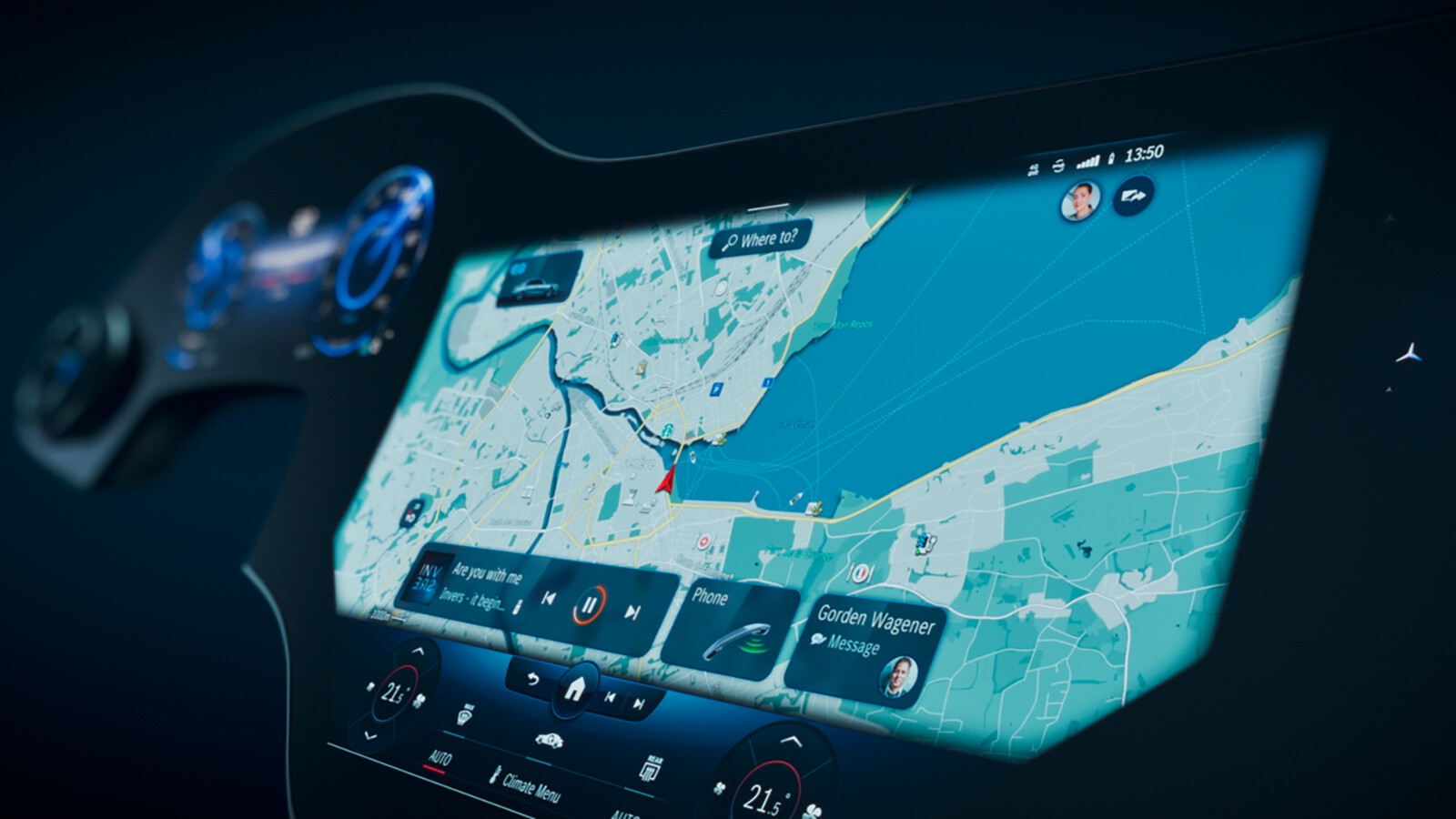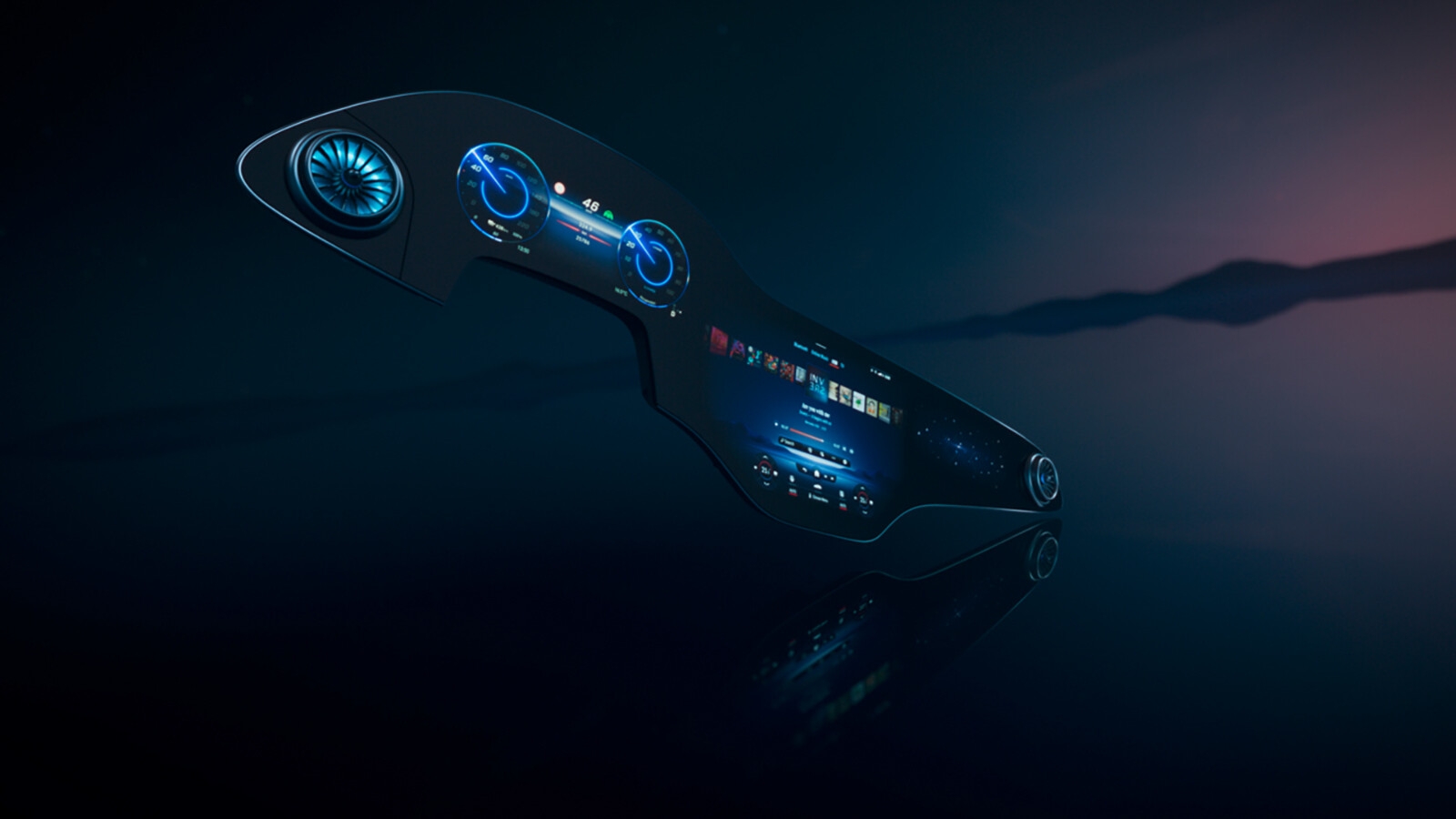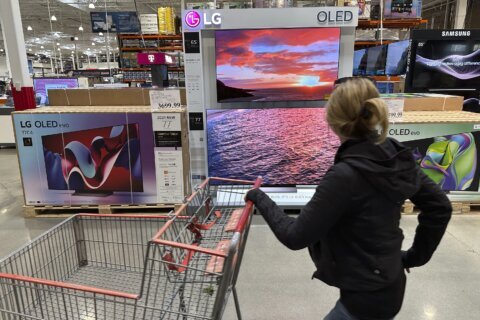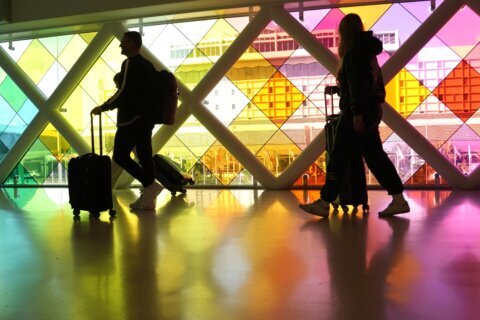
Automakers have, for years, been offering larger and larger touchscreens in vehicle dashboards. Ram trucks, for instance, come with 12-inch screens, measured diagonally, while the new Ford Mustang Mach-E electric SUV has a screen that measures an impressive 15.5-inches.
Mercedes, however, has taken the trend to a whole new level.
Its new MBUX Hyperscreen covers almost the entire dashboard in front of the driver and passenger. It can’t even be measured diagonally because it isn’t a rectangle. It’s curved. Holes allow air vents to pass through. MBUX, which stands for Mercedes-Benz User Experience, is Mercedes’ name for the touchscreen software in its cars.
All of that glass isn’t actually a single interactive screen. There are three separate screens behind the large, dark glass giving the appearance of a single huge screen. One of the screens acts as the gauge cluster in front of the driver, one is in the usual central location within reach of both the passenger and driver, and there’s one more in front of the passenger seat.
The screen in front of the passenger seat will allow that occupant to select their own entertainment functions and, in countries where it’s legal, watch videos using Bluetooth headphones. When no one is in the front passenger seat, that screen will show decorative designs.

The new screen system will be available on the Mercedes EQS, a large electric luxury sedan expected to be revealed later this year.
Backseat passengers in the EQS will have their own screens, too, and occupants will be able to “flick” contents with a finger from one screen to another.
Besides the screen itself, Mercedes said the car will have an entertainment system with artificial intelligence to predict drivers’ and passengers’ needs and preferences. For example, if a driver usually requests a “Hot Stone Massage” function from the massaging seats in the afternoon on cold days, that option will be presented to the driver as soon as they get into the car. Other options, such as destination, music choices and different vehicle settings will also change automatically based on things like the local time, location and temperature.
Besides selling cars with bigger screens, Mercedes is also projecting that it will make money — more than $1 billion annually by 2025 — from software and data subscriptions for apps that will run on the screen, said Öla Källenius, chairman of Mercedes-Benz and its parent company, Daimler.
Mercedes has conducted crash tests with the screen to ensure that it’s safe, said Källenius.
In case of a crash, the glass sheet is engineered with specific breaking points so that it doesn’t shatter dangerously. Brackets holding it onto the dashboard are also designed to break away in a hard impact.







